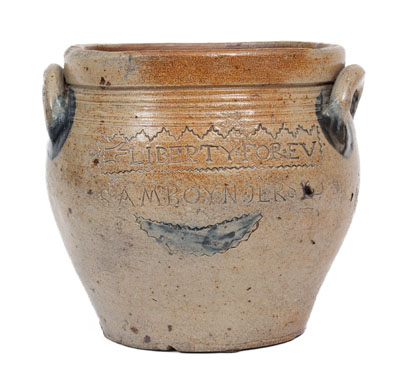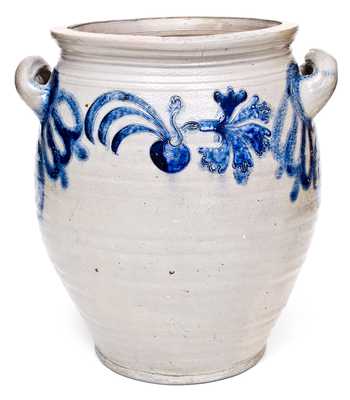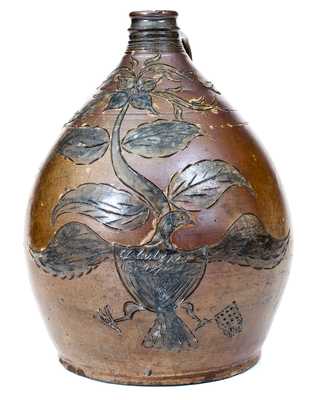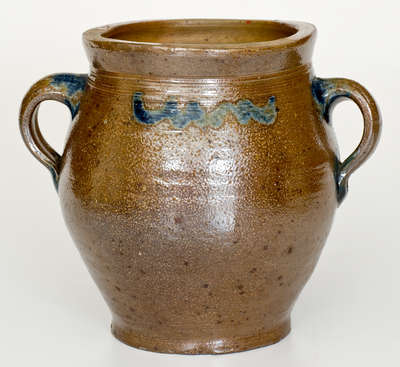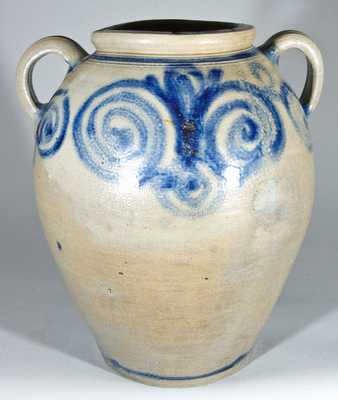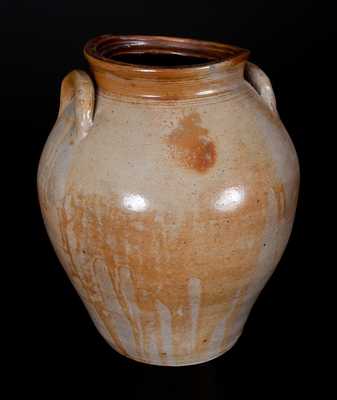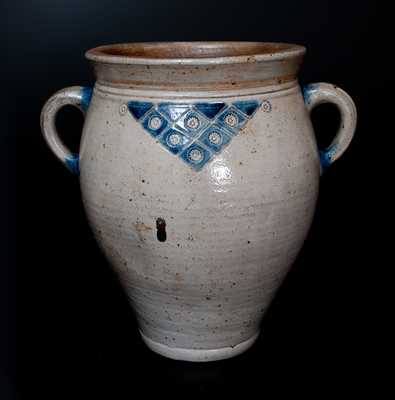Exceedingly Rare and Important Cobalt-Decorated Stoneware Teapot with Impressed Bird and Coggled Design, attributed to Thomas Warne and Joshua Letts, South Amboy, NJ, early 19th century, approximately one-half-gallon, ovoid vessel with applied tubular pouring spout with tapered tip, strap handle, rounded rim, and footed base. Each side decorated with an impressed and cobalt-highlighted design of a crested bird with long tail. Shoulder embellished with a coggled column and triangle design. Brushed cobalt highlights to base of spout and handle. This recently-discovered example is one of a small number of salt-glazed stoneware teapots from the 18th and early 19th century known. The teapot form, almost strictly produced during America's colonial and early Federal periods, is considered one of the rarest and most coveted of all of this country's stoneware forms. This form receives considerable attention in the 2009 book, Salt-Glazed Stoneware in Early America, written by Janine E. Skerry and Suzanne Findlen Hood, in which a few examples are illustrated as close links in design to their German ancestors. Only a small number of this form have survived, nearly all of which are attributed to Manhattan, NY. A testament to the early origin of this form is one diminutive example, inscribed "Elizabeth States her Pot," believed to have been made circa 1745 by Adam States, Sr., for his wife during a brief tenure in Manhattan. The teapot to be auctioned is the first example attributed to South Amboy, New Jersey, we have seen. The distinctive impressed bird design matches those found on signed jars produced by the firm of Thomas Warne and Joshua Letts in South Amboy, New Jersey, circa 1807. A significant new discovery in early American stoneware, and one of the finest examples of New Jersey stoneware to come to auction in years. Provenance: A fresh-to-the-market example, purchased by the consignor at an antiques show in Pennsylvania approximately forty years ago. Excellent condition with some crazing on the underside, which extends a short distance onto base, presumably in-the-firing, and a tiny base chip. H 8 1/2".










